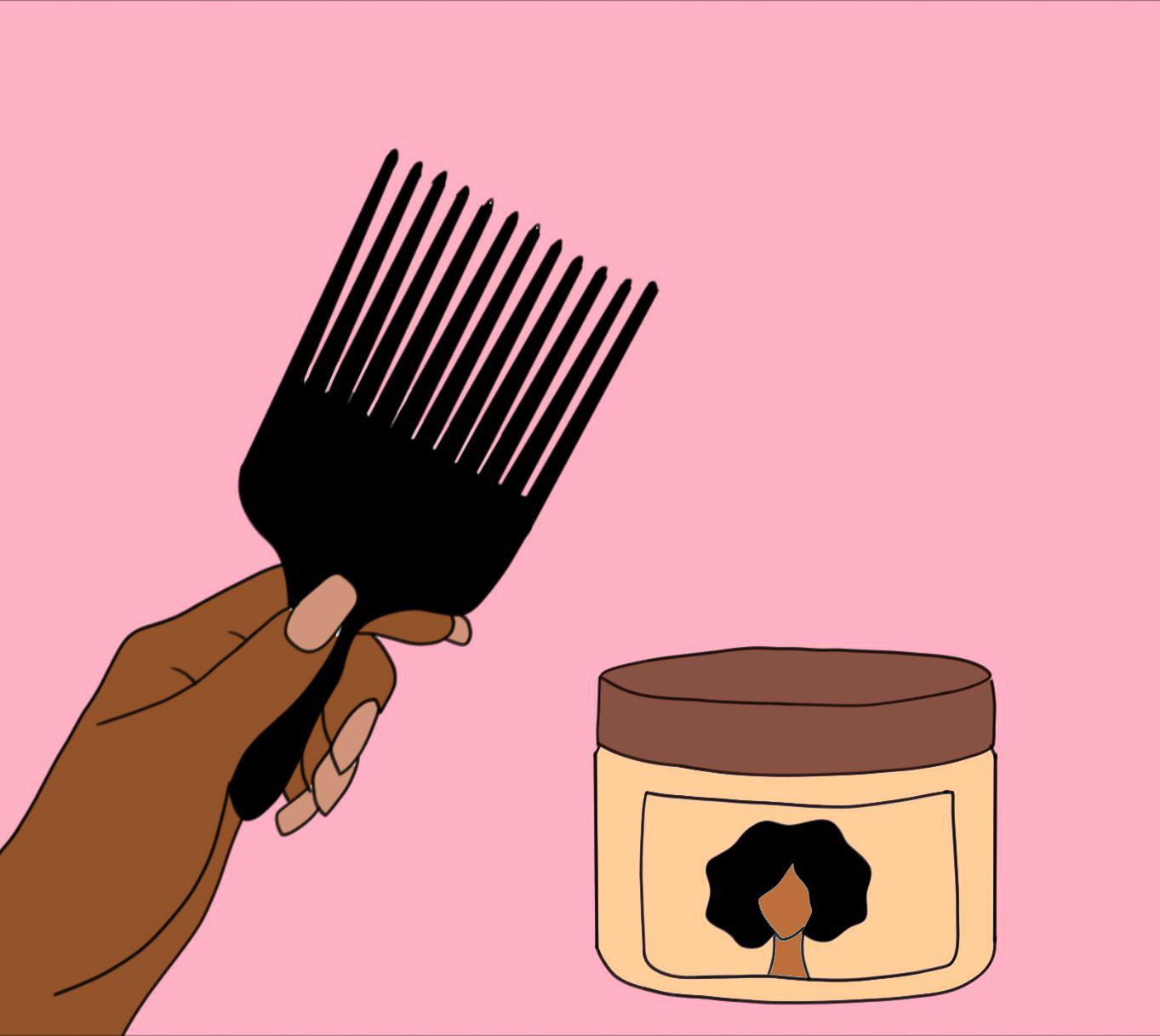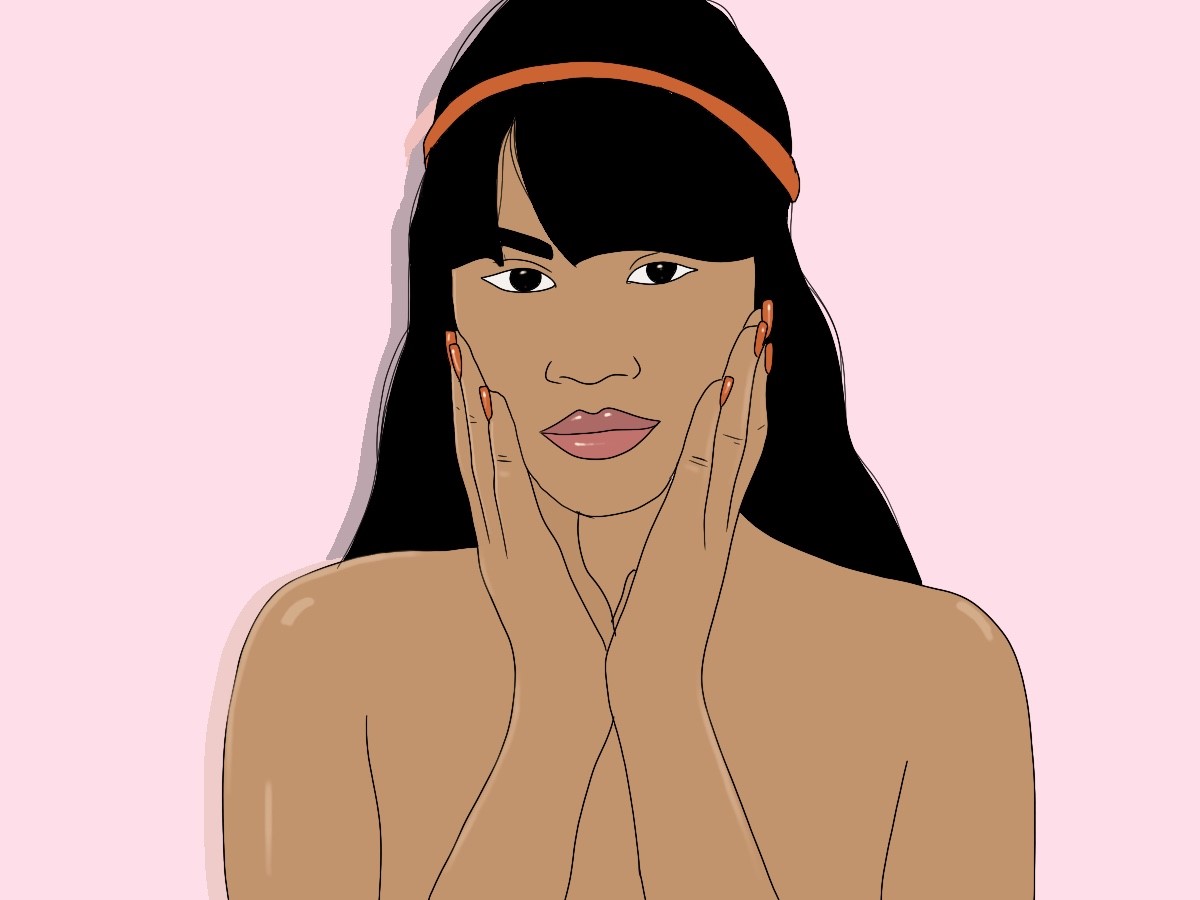Ancient beauty rituals are more than a few buzzwords in beauty advertising. Many ancient beauty rituals have been practised for thousands of years. From the ingredients we use in face masks and skincare, to the methods we use to apply our haircare.
Some of the best and brightest beauty rituals come from indigenous groups practising self-care. Today, indigenous women are finding empowerment through the making and selling of their family traditions. Giving them financial freedom and providing education to those who continue to spread the practice of ancient beauty rituals.
Why some indigenous women leave ancient beauty rituals behind
Most indigenous women have grown up not seeing faces and bodies like theirs in media representation. It’s something that affects your self-esteem and realistic expectations of beauty. As such, we can feel alienated from standards of beauty. For so many of us growing up, we could not find makeup to match our skin tone or products suitable for our hair, leaving us feeling like we were doing something wrong. Instead, the real issue is that ancient beauty rituals that suit our skin, hair and nails have been abandoned.
Many indigenous women feel the pressure to assimilate to beauty standards to be taken seriously in the workplace and even avoid bullying at school. This often includes indigenous women feeling the pressure to forgo their cultural practices and traditions with the hope of being accepted by the majority. There are so many indigenous groups around the world for whom assimilation has not been a choice, however. Instead, it’s been forced on them during colonisation and genocide. At times, some cultural practices were abandoned by indigenous women after they were made punishable by law. The knock-on effect is indigenous people rejecting their own traditions. This attitude trickles down into future generations. Until the meaning behind ritualistic practices is distorted or lost entirely.
In the last decades, so many indigenous beauty practices and ingredients have been co-opted by cosmetic brands for commercial purposes. This gets products to a wider range of people. But often the reason why they were originally used is lost. This leads to women using products incorrectly or not to their full potential. It also means that the indigenous groups who used them don’t get recognition for creating and passing on these rituals. Instead, they’re marketed as ‘new trends’ before being replaced by the latest fashion. For specific examples, see Why I’m apprehensive about white brands selling Black products and ingredients (and why you should be too).
What is a beauty ritual anyway?
An ancient beauty ritual is one that has been passed down from generation to generation for thousands of years. Indigenous groups who mastered ingredients and techniques are to thank for their survival. A perfect example of an ancient beauty material is the henna plant. Henna has been used all over Asia, Africa and the Middle East for dying hair and nails, colouring leather and creating mehndi body art.
Without breaking the bank, you can do so many things with henna. The grinding of the leaves and the creation of henna paste is a community process for many. Henna was made in households around me throughout my whole childhood. My friends and family had different recipes they passed down for generations. It was often given as gifts too. There’s something special about a recipe used for beauty passed from mother to daughter. Friend to friend. Generation to generation.
Sugar waxing is another beauty ritual making a big comeback. It’s the process of hair removal using a heated sugar lemon and water mixture. It has been practised since around 1900 BC in the Middle East and Northern Africa. Women of colour often cannot use the typical hair removal machines that salons and spas offer. They are not calibrated for brown skin and they can cause skin lesions and hyperpigmentation. Embracing these old techniques can help women avoid the side effects associated with modern hair removal techniques.
Ancient beauty rituals are full of wisdom
Many indigenous women are finding business opportunities by making and selling their ancient beauty products. At the same time, they’re educating the public and their own people on how to care for themselves using traditional means. Indigenous visibility is on the rise in the media, particularly on TikTok and Instagram. Obviously, the use of henna and the like are not only used by indigenous groups. Commercialisation allows people who don’t live around these raw materials to get access to these products. This includes indigenous people who do not know how to get started with rediscovering their culture’s ancient beauty rituals. Or those who do not have the time to DIY products at home.
Some eczema and psoriasis sufferers find that milk and honey in their skincare soothe their symptoms. The use of milk and honey added to baths has been a popular ancient beauty ritual originating from ancient Egypt for thousands of years, rumoured to be the beauty secret of pharaohs. It’s always fascinating to see health and beauty tips from the past that worked despite our ancestors’ lack of access to scientific testing. Today, honey and milk baths on the skin have been proven to have anti-inflammatory properties. This is due to the small amounts of retinol and vitamin D they include. The Ancient Egyptians were certainly onto something.
Indigenous women creating their own businesses gives other indigenous women the opportunity to support their community in a way that creates stability for future generations, as well as providing medical services. Beauty is just one tool to achieve confidence and help inspire others.
Ancient beauty rituals don’t break the bank
Ancient beauty rituals are particularly attractive during times of strife. Not all of us can afford vampire blood facials and 24k gold face masks. Another promising aspect of ancient beauty rituals is that they’re not expensive. They tend to require ingredients that can be purchased easily and mixed at home to your own preference. Growing your own ingredients gives you the opportunity to better control what’s in the products you wear. Historically, indigenous groups have often been reliant on the seasons to collect their raw materials and store them for future use. This type of education makes beauty season-proof and more robust in terms of sustainability.
What can ancient beauty rituals teach us?

If you like buying and trying new cosmetics as I do, it can be easy to forget people of the past got by without them pretty well. Indigenous cultures and those who practice them tend to be more in tune with how their ancestors lived. There are modern brands that encapsulate old wisdom in modern convenience like Yao Secret.
Yao Secret is a haircare company that works directly with the indigenous group that provides the rice that is used in the company’s shampoos and conditioners. The women of the Yao tribe collect ritually prepared rice water from Longji rice terraces. From this, they can maintain long shiny hair, often which touches the ground. This Sino-British company is committed to bringing their special products to the masses.
Sales of Chébé powder is another trendy ingredient offering people around the world the opportunity to try an ancient beauty ritual. Various nomadic women of Chad use Chébé powder in a liquid mixture that they soak their hair in before braiding it. Their hair is hip length, strong and enviably thick hair.
Not all ancient beauty rituals are created equal
It’s tempting to view ancient beauty trends through the lens that they’re all equally full of wisdom. But there are exceptions. The gua sha tool is one example of a cosmetic tool that has been co-opted for modern use. It was used as a tool of medicine in Ancient China. It has a mixed history, used to provide massages and at other times used to promote pseudo-science.
While many people use it more gently than it has been prescribed in the past, it can still hold dangers if used too roughly. You might be better off using your fingers to massage your face instead. Gua sha tools can be made from various materials like wood. But it’s trendy to see them made from jade or rose quartz. This attracts more people to buy them for the luxury aesthetic they provide. I love to massage my skincare products into my face for better absorption using a jade gua sha. But the way I’ve seen some influencers promote the tool is dangerous.
The ancient beauty ritual ‘scam’
The original concept was to use the gua sha tool to promote muscle healing by pressing hard with the tool and dragging it over affected muscles. The thought was that this scraping would force oxygenated blood flow to the muscles needing healing. Some people press the gua sha into the skin so hard that it bruises the skin heavily and causes tissue damage. It’s alarming seeing videos of influencers telling their followers they can change their face shape with a gua sha tool if they press hard enough. This is where some practices should be left in the past or changed to maintain safety.
There has been a problem in recent decades with cosmetics brands using ancient beauty terms to sell harmful products. For example, black henna is the name often given to two different products. It’s either the name generally used for indigo-coloured hair dye or temporary tattoos – neither contains real henna and only some are safe for use. Some black henna products are made from PPD, which causes wild allergic reactions. It’s important not to rely on familiar terms when buying products like hair dyes and temporary tattoos. You should always thoroughly research what you’re about to use in your beauty routine.
The rise of indigenous visibility
There’s been a fantastic rise in indigenous visibility recently. These personalities create short videos providing education about beauty, lifestyle and culture like Shina Novalinga. Her recent journey on Instagram talking about her Inuk face tattoos, called ‘tunniit’, has been fascinating. One of the aspects of Inuk face tattoos that I love is that they’re often a bonding experience between Inuk women since they are traditionally carried out on women, by women.
Indigenous face tattoos have become more visible in the media due to people like politicians and journalists wearing them out in public. Particularly in places like New Zealand where the Māori originate. Model and activist Quannah Chasinghorse made an appearance at the 2021 and 2022 Met Gala to much success. Even appearances at fashion-focused events can provide visibility for young indigenous people to see someone they resemble triumphing. Chasinghorse wore a necklace made from porcupine quills and moose hide and a feather in her hair to the Gala. While she felt like she stood out, it brought acknowledgement to a group not often seen in these types of spaces.
For indigenous women, showing off their creative work in fashion and makeup can be a useful gateway to introducing people to their activist work. Storytelling is an obligation when you come from an indigenous group because the education just being visible provides is so meaningful.
Reasons to celebrate
There are various ways for indigenous women to reclaim their culture through beauty. Some indigenous women want their pride in their culture to be displayed through their choice of fashion. Others want more permanent displays like traditional tattoos. But there’s no single ‘right way’ to embrace your culture through beauty.
I am proud and excited whenever I see the emergence of new indigenous-owned companies like Cheekbone Beauty, Dilkara, Niawen, Bush Medijina or Sacred Skin (Aboriginal-owned).
Ancient beauty rituals stand the test of time
Next time an influencer tells you they’ve discovered a new trendy beauty trend, chances are it has been used by indigenous groups for years. These ancient beauty trends survive wars, migration and illegality. All to provide both indigenous and non-indigenous people with education and self-care all in one.
Find more beauty articles here >
Written by Chanté-Marie Young
Illustrated by Francesca Mariama

